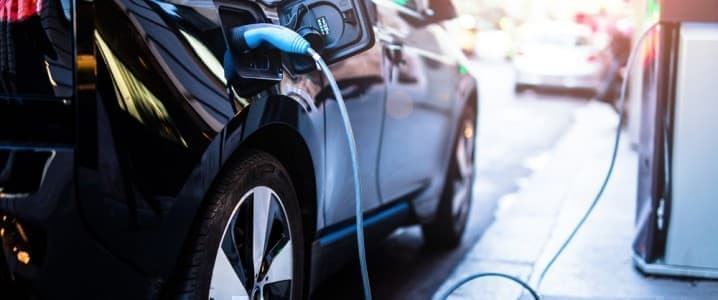For all their hype and techno-wizardry, EVs still bow down to their gas-powered cousins when it comes to driving range, not to mention that they take much longer to refuel. But what if you could not only charge your EV wirelessly but also be able to do it on the fly? Suddenly, the EV glass ceiling would be forever shattered, leaving piston heads green with envy. That’s why a new technology that allows EV drivers to recharge their batteries on the go is bound to thrill EV buffs everywhere.
Stanford University researchers have unveiled a wireless charging technology that employs magnetism to seamlessly charge EVs, drones, and robots during operation.
But read on before you rush to ditch your gas-guzzler for a brand new Tesla Model 3.
Charging on the go
The scientists made their first breakthrough three years ago when they developed a wireless charger capable of transmitting electricity even as the distance to the receiver keeps changing. They were able to pull this off by using an amplifier and a feedback resistor that allowed the charging system to continuously adjust its operating frequency on the go.
That was a breakthrough given that wireless charging is highly sensitive to the relative movement of the device with respect to the power source during charging. Previous attempts to overcome this limitation employed nonlinear parity-time symmetric circuits to deliver robust wireless power. However, these systems experience huge power losses making them too inefficient for practical uses.
Unfortunately, Stanford’s first iteration also suffered from a similar handicap--it consumed too much power to generate the required amplification.
Their latest work, however, achieves much higher efficiencies by using a power-efficient switch-mode amplifier system that incorporates current-sensing feedback in a parity–time-symmetric circuit.
Related: Petrobras Expects Permanent Damage To Oil Demand As It Writes Off Billion This arrangement maintains a constant effective load impedance across the switch-mode amplifier, thus allowing the amplifier to maintain high efficiency of up to 92% during charging.
Scaling the New Technology
Despite the impressive charging efficiency, Stanford’s prototype has only been demonstrated over a distance of 2-3 feet for the transmission of just 10 watts. This is nowhere near enough to charge your average EV, with Tesla superchargers typically spouting out ~250kW.
But don’t feel discouraged.
Shanhui Fan and Sid Assawaworrarit, the Stanford engineers who built the system, have said there “aren’t any fundamental obstacles” that would prevent their technology from scaling to transmit tens or even hundreds of kilowatts necessary to charge an EV.
Further, they have said they are “already within the range of practical usefulness” needed for recharging gadgets like robots during operation.
Game Changer for EV Industry
Over the past decade, EVs have made the remarkable leap from a curious fad widely viewed as a rich man’s toy to a mainstream technology that’s giving piston heads some serious food for thought. A big part of this success can be chalked up to great advances in battery technology that has made EVs more affordable and brought them closer to achieving cost parity with ICEs.
Still, many people considering the switch to EVs cite range limitations as their biggest concern.
Wireless charging--the most prevalent subset of wireless power transmission--is now a popular consumer technology commonly used by smartphone makers, including Apple, Samsung, LG, Nokia, and Google, among others. Indeed, wireless charging is now used in healthcare, manufacturing, and automotive industries and even the burgeoning Internet of Things (IoT) industry.
Related: Goldman Sachs: Oil Market Headed For Deficit In June
However, all these technologies employ charging pads that only work when the devices are stationary. Charging an EV wirelessly is a cool trick you can use to impress your buddies but does not improve the value proposition of owning an EV a whole lot.
That makes the tech by Stanford engineers a major leap forward because it gives us hope that one day drivers will be able to recharge their vehicles without having to stop for 30-60 minutes.
We don’t know yet whether the Stanford charging technology will be able to work over the entire 63-75 mile radius that’s typical between Tesla superchargers. But even increasing the typical driving range by 20-30% might prove enough to be a game changer for the EV industry.
By Alex Kimani for Oilprice.com
More Top Reads From Oilprice.com:
- Oil Spikes Despite Pandemic Uncertainty
- How Accurate Are EIA And API Inventory Reports?
- Tesla Could Launch A Million-Mile Battery This Year



















Electric vehicles (EVs) stand no chance of displacing ICEs for the foreseeable future. ICEs outperform EVs in range, efficiency, price and convenience. Still, there is a place for EVs in coming years as part of energy diversification.
Furthermore, there will be a need for trillions of dollars of investment to expand the global electricity generation capacity in order to accommodate the extra electricity needed to recharge millions of EVs. How could such expansion be sourced: nuclear, hydrocarbons or solar?
Dr Mamdouh G Salameh
International Oil Economist
Visiting Professor of Energy Economics at ESCP Europe Business School, London
It's a failure to understand the use pattern changes. In a gas car you go someplace to fill it up once or twice a week. Its a hassle, better now with card readers at the pump. But still. Me? I just plug it in when I get home. Cars full in morning.
Even charging 110v isn't that bad. 50 miles overnight. Most drive less then that every day. With 200+ miles, even if you have some high mile days you'll make it to the weekend were your battery will top up.